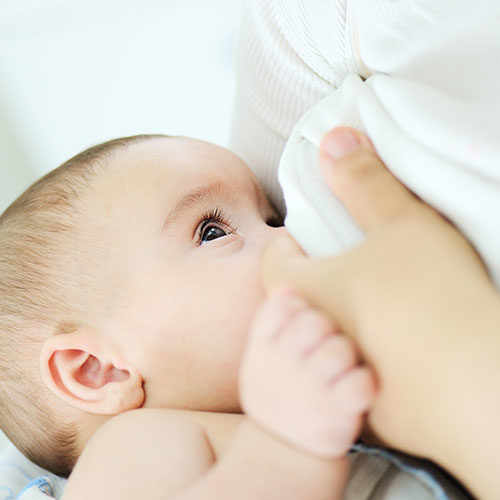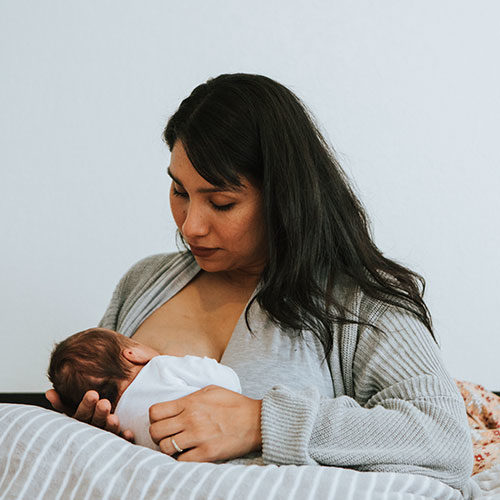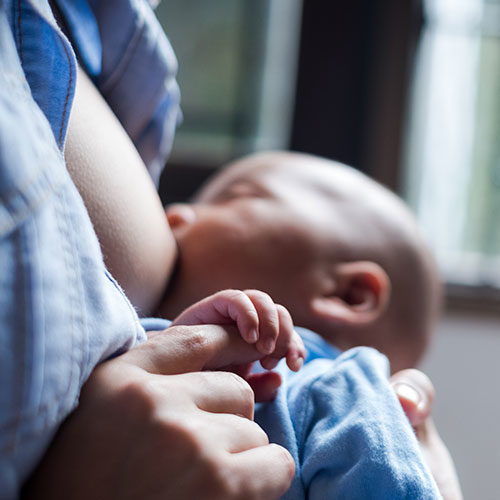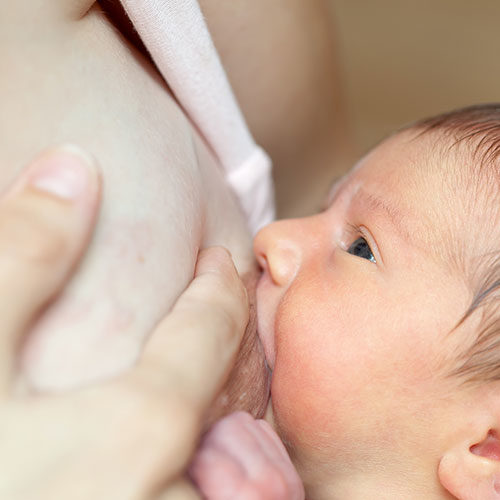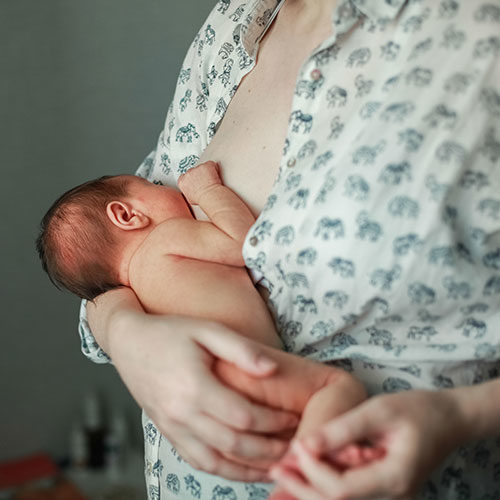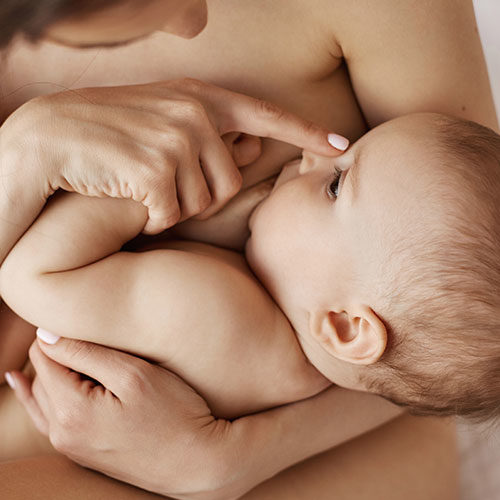What are Milk blisters or Milk Bleb? Why do I have it recurrently?
A milk blister or a milk bleb is a tiny dot on the nipple causing nil to severe pain. It can be of three types.
Types of Milk Blisters :
- A milk blister can be caused by a blocked or plugged duct wherein the blockage occurs almost just at the nipple. Here, the obstruction is due to a tiny clump of hardened milk or a string of fattier milk which has difficulty flowing out. Thus, it looks like a white/yellowish dot on the nipple.
- Another kind of milk blister happens because a thin layer of skin grows on one of the pores of the nipple, blocking the milk. So, the milk is trapped behind this skin, looking like a white dot. It’s basically milk under the skin.
- The third type occurs due to friction or nipple damage due to improper latch, wrongly fitting nipple shield etc. This kind of blister usually is brown or red in colour.
Common Causes behind a Milk Blister :
Most of the factors that can cause a clogged or blocked duct can cause a milk blister as well. Some of the most common causes are listed below.
- Oversupply
- Skin growing on the pore
- Poor latch
- Thrush
- Tongue ties
- Friction on the nipple due to vigorous suckling, shallow latch etc.
How to treat a Milk Blister?
If the blister is not painful, there is no need to do anything. It most likely will go away soon enough. But sometimes, a milk bleb is painful. In that case, it is required to treat it.
1. Blisters caused by blockage of the duct at the nipple –
The first type of blisters caused by blockage of the duct due to fatty, stringy milk needs to be addressed the way we address a clogged duct. Applying moist heat, massaging the breast, breast compression and draining the breast after each feed is helpful. You can read about other techniques here.
2. Blisters caused by skin growing over a pore –
The second type of blisters which occur due to the skin growing on the pore can be dealt with easily. In most cases, the pressure and suction of the baby’s suck or pump pop it out naturally. If that doesn’t happen on its own, one might have to aid it with the following techniques.
- Soften the blister before nursing by applying moist heat. This can be done by soaking the nipples in hot water with Epsom salt and then further softening the bleb with a wet hot towel works well. Repeating this process before each nursing session helps the blister to soften, and the blocking skin to clear out while nursing. Wearing a cotton ball soaked in olive oil also helps soften the blister.
- If the milk bleb won’t go away even with the above techniques, clearing the blocking skin from the pore can be considered. However, it is important to note that this should only be done if nothing else has worked.
* Rub the blister gently with a clean, wet cloth.
* If the blister is protruding from the nipple, it can be pulled gently to loosen and soften it.
* Scrape the blister off with clean fingernails.
* Use a sterile needle to peel the blocking skin off. (This should be avoided as it contains risk of infection. Or it should be done by a medical practitioner.)
3. Blisters caused due to friction or nipple damage -This third type of blisters call for attention to the root cause. It most likely always is a shallow latch. In some cases, biting or clamping due to fast letdown or teething can also be a cause. Here, it is important to work on the cause. The latch must be corrected. The oversupply should be dealt with. And there should be some healing period given to the nipple, if needed. During this time, direct nursing or pumping may be avoided to avoid blunt trauma. But regular hand expression must continue to keep the supply up and to prevent blocked ducts and engorgement. More information can be found here.
How to avoid recurrence of Milk Blisters?
It is extremely important to ensure the following things in order to prevent recurrence of milk blisters.
- Ensure a deep latch.
- Work on the underlying cause. E.g. oversupply, tongue-tie etc.
- Continue the process that worked to treat the milk blister for several days even after the milk blister is gone. This can prevent a recurrence.
References :
https://kellymom.com/bf/concerns/mother/nipplebleb/
https://kellymom.com/bf/concerns/mother/nipplehealing/
https://www.laleche.org.uk/mastitis/#Blisters
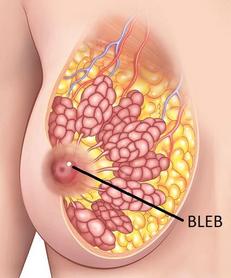
Wish to speak with a member of our team who is a certified lactation professional and also an experienced breastfeeding mother, click on this link.
Medical Advice Disclaimer
THIS WEBSITE DOES NOT PROVIDE MEDICAL ADVICE.
The information, including but not limited to, text, graphics, images and other material contained on this website are for informational purposes only. No material on this site is intended to be a substitute for professional medical advice, diagnosis or treatment. Always seek the advice of your physician or other qualified health care provider with any questions you may have regarding a medical condition or treatment before undertaking a new health care regimen, and never disregard professional medical advice or delay in seeking it because of something you have read on this website.
Disclaimer
We understand and acknowledge that parents and babies can be of various genders on a spectrum of LGBTQI+. Families come in diverse flavours. However, in our articles, for the sake of simplicity and convenience, we will be referring to the breastfeeding parent as the mother and using the female pronouns- ‘she’ and ‘her’ for babies. Babies can be nourished and nurtured in different ways and while we have used the terms breastfeeding and nursing, we recognize that parents can opt to chest feed or finger feed.
We don’t have conflicts of interest and declare, and we are compliant with the WHO code of marketing of breastmilk substitutes and the IMS act.
In case you find any information on this website that needs to be updated, please write to us at info@bsim.org.in

